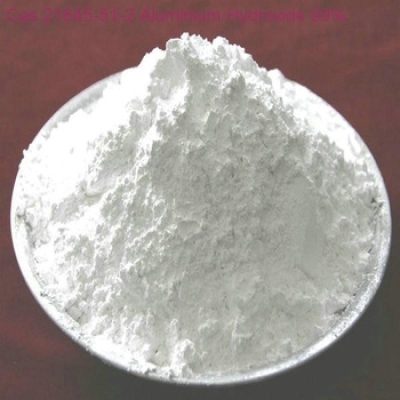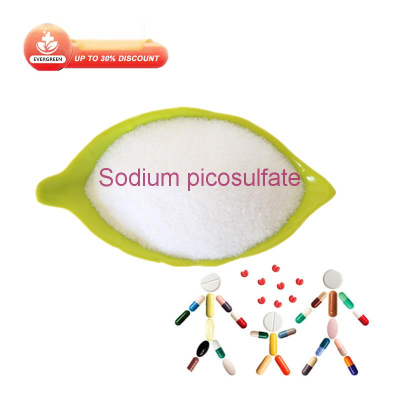-
Categories
-
Pharmaceutical Intermediates
-
Active Pharmaceutical Ingredients
-
Food Additives
- Industrial Coatings
- Agrochemicals
- Dyes and Pigments
- Surfactant
- Flavors and Fragrances
- Chemical Reagents
- Catalyst and Auxiliary
- Natural Products
- Inorganic Chemistry
-
Organic Chemistry
-
Biochemical Engineering
- Analytical Chemistry
- Cosmetic Ingredient
-
Pharmaceutical Intermediates
Promotion
ECHEMI Mall
Wholesale
Weekly Price
Exhibition
News
-
Trade Service
Vitamin C has been used in cancer treatment for a long time, and as early as 70 years of the last century, retrospective studies have shown that intravenous infusion of large doses of vitamin C can prolong overall survival (OS)¹⁻²
in some patients with advanced cancer.
Based on the above-mentioned background, the team of Professor Xu Ruihua of Sun Yat-sen University Cancer Center conducted a large-scale prospective phase III clinical study, based on the above-mentioned background that the team of Professor Xu Ruihua of Sun Yat-sen University Cancer Center has conducted a large-scale prospective phase III clinical study VITALITY trial The therapeutic use of high-dose vitamin C in metastatic colorectal cancer (mCRC)⁹ was published in Clinical Cancer Research (IF:13.
801).
Research background
Previous studies have shown that large doses of vitamin C selectively kill human CRC cells with KRAS or BRAF mutations and inhibit the growth
of colorectal cancer in Apc/KRAS G12D-mutated mice.
In previous studies, researchers have demonstrated that high-dose vitamin C and oxaliplatin can exert synergistic antitumor effects
in tumor cell lines and animal models.
However, to date, there have been no large phase III studies evaluating the use of vitamin C plus chemotherapy in mCRC, so the VITALITY study was designed to evaluate the efficacy and safety
of high-dose vitamin C plus FOLFOX± bevacizumab versus FOLFOX±bevacizumab as first-line treatment for mCRC.
Research methods
The VITALITY study is a randomized, multicenter, phase III clinical trial conducted in 14 centers in China, mainly including patients aged 18-75 years with an ECOG status score of 0-2 and untreated stage IV unresectable colorectal cancer, who need to ensure that the patient's expression level of glucose-6-phosphate dehydrogenase (G6PD) is normal and the organ function is good
.
Patients who have previously received adjuvant chemotherapy or neoadjuvant chemotherapy may also be enrolled, but must have completed treatment
at least 12 months prior to randomization.
Patients were randomized (1:1) to control (mFOLFOX6± bevacizumab: oxaliplatin 85 mg/m², d1; Calcium folinate 400 mg/m², d1; 5-FU 400 mg/m², d1 followed by 2400 mg/m² continuous infusion for 46-48 hours; Bevacizumab 5 mg/kg, d1; q2w) or experimental group (vitamin C + mFOLFOX6± bevacizumab: vitamin C 1.
5 g/kg intravenously for 3h, d1-3; FOLFOX± bevacizumab regimen with control; q2w) to receive treatment for 12 cycles or until disease progression, toxicity is intolerable, or the patient withdraws informed consent
.
After 12 cycles of treatment, patients can communicate with researchers to determine whether to proceed with maintenance therapy
.
The primary endpoint of the study was progression-free survival (PFS), with secondary endpoints including OS, objective response rate (ORR), and safety
.
Exploratory endpoints included correlation assessment between RAS expression status and high-dose vitamin C antitumor activity
.
Research results
Between 2017 and 2019, a total of 442 patients were included in the study, including 221 patients in both the control and trial groups, and all were included in the intention-to-treat (ITT) population for outcome analysis
.
The baseline characteristics of the patients are shown in Table 1, and a good baseline balance is maintained between the two groups
.
Table 1.
Baseline characteristics of the patient
As of the time of data analysis, the median follow-up of patients was 24.
5 months, the median duration of treatment was 4.
5 months in both groups, and 70 patients in the experimental group and 69 patients in the control group received maintenance therapy
.
PFS analysis
As shown in Fig.
1, the median PFS of the ITT population in the experimental group and the control group were 8.
6 months (95% CI, 7.
7-10.
0) and 8.
3 months (95% CI, 7.
9-9.
1), respectively, and there was a trend of improvement in PFS in the experimental group, but the difference was not statistically significant (HR=0.
86; 95%CI 0.
70-1.
05; P=0.
1).
Figure 1.
PFS analysis of ITT populations
The investigators performed a preset subgroup analysis based on the patient's RAS or BRAF status, and the results of the analysis are shown
in Figure 2.
For patients with RAS mutants, the median PFS in the control group was 9.
2 months and 7.
8 months, respectively, and the experimental group was significantly better than the control group (HR=0.
67; 95% CI, 0.
50-0.
91; P=0.
01).
Further multivariate analysis showed that the addition of high-dose vitamin C to chemotherapy was an independent influencing factor for PFS improvement in patients with RAS mutation (HR=0.
64; 95% CI, 0.
47-0.
87; P=0.
004).
Figure 2.
PFS subgroup analysis in patients with RAS mutant type
Secondary endpoint analysis
As shown in Figure 3, the median OS for the ITT population in the experimental and control groups was 20.
7 months and 19.
7 months, respectively (HR=1.
04; 95% CI, 0.
81-1.
33; P=0.
7).
For patients with RAS mutants, although the median OS in the experimental group was better than that in the control group, the difference was not statistically significant (20.
2 months vs.
16.
8 months; HR=0.
79;95%CI,0.
55-1.
13;P=0.
2)
。
Figure 3.
OS analysis of ITT populations
According to RECIST v1.
1, the ORR of the experimental group and the control group were 44.
3% and 42.
1%, both were partial remissions (PR), and the disease control rate (DCR) was 84.
2% and 81.
4%,
respectively.
Table 2.
Analysis of the patient's disease remission
Security analysis
As shown in Table 3, the incidence of treatment-related adverse events (TRAEs) was 86.
9% and 81.
9% in the experimental and control groups, respectively, and the incidence of grade ≥ 3 TRAEs in the experimental group was 33.
5% and 30.
3%
in the control group 。 Common grade 3 TREs in ≥ test and control groups were neutropenia (14.
9% vs.
15.
4%), anemia (5.
0% vs.
2.
3%), leukopenia (3.
2% vs.
3.
6%), diarrhea (3.
2% vs.
2.
7%), vomiting (3.
2% vs.
1.
8%), and ileus (2.
3% vs.
4.
5%)
.
Table 3.
Security analysis
Conclusion of the study
The safety of high-dose vitamin C was generally manageable, however the study did not meet its primary endpoint, and for the ITT population, the median PFS in the trial group showed no statistically significant
difference from the control group, despite numerical superiority.
Through the preset subgroup analysis, it can be found that the median PFS of the experimental group is significantly better than that of the control group for patients with RAS mutant mCRC, which suggests that high-dose vitamin C may have a selective killing effect on RAS mutant CRC cells, and high-dose vitamin C may increase the clinical benefit
of patients with RAS mutant mCRC.
The investigators believe that this may be related to the mechanistic source of vitamin C-selective cytotoxicity and recommend follow-up clinical studies to further evaluate the clinical benefit of high-dose vitamin C therapy in patients with
RAS-mutated mCRC.
References:
1.
Cameron E , Pauling L .
Supplemental ascorbate in the supportive treatment of cancer: prolongation of survival times in terminal human cancer.
Proc Natl Acad Sci U S A 1976; 73:3685–9.
2.
Cameron E , Pauling L .
Supplemental ascorbate in the supportive treatment of cancer: reevaluation of prolongation of survival times in terminal human cancer.
Proc Natl Acad Sci U S A 1978; 75:4538–42.
3.
van Gorkom GNY , Lookermans EL , Van Elssen C , Bos GMJ .
The effect of vitamin C (ascorbic acid) in the treatment of patients with cancer: a systematic review.
Nutrients 2019; 11:977.
4.
Kassouf W , Highshaw R , Nelkin GM , Dinney CP , Kamat AM .
Vitamins C and K3 sensitize human urothelial tumors to gemcitabine.
J Urol 2006; 176:1642–7.
5.
Kurbacher CM , Wagner U , Kolster B , Andreotti PE , Krebs D , Bruckner HW .
Ascorbic acid (vitamin C) improves the antineoplastic activity of doxorubicin, cisplatin, and paclitaxel in human breast carcinoma cells in vitro.
Cancer Lett 1996; 103:183–9.
6.
Jung SA , Lee DH , Moon JH , Hong SW , Shin JS , Hwang IY, et al.
L-Ascorbic acid can abrogate SVCT-2-dependent cetuximab resistance mediated by mutant KRAS in human colon cancer cells.
Free Radic Biol Med 2016; 95:200–8.
7.
Huijskens MJ , Walczak M , Sarkar S , Atrafi F , Senden-Gijsbers BL , Tilanus MG, et al.
Ascorbic acid promotes proliferation of natural killer cell populations in culture systems applicable for natural killer cell therapy.
Cytotherapy 2015; 17:613–20.
8.
van Gorkom GNY , Klein Wolterink RGJ , Van Elssen C , Wieten L , Germeraad WTV , Bos GMJ .
Influence of vitamin C on lymphocytes: an overview.
Antioxidants 2018; 7:41.
9.
Wang F, He MM, Xiao J, et al.
A Randomized, Open-Label, Multicenter, Phase 3 Study of High-Dose Vitamin C Plus FOLFOX ± Bevacizumab versus FOLFOX ± Bevacizumab in Unresectable Untreated Metastatic Colorectal Cancer (VITALITY Study).
Clin Cancer Res.
2022; 28(19):4232-4239.
doi:10.
1158/1078-0432.
CCR-22-0655
Review: Your
Typesetting: Youshi
Execution: Uni
This platform aims to deliver more medical information
to healthcare professionals.
The content published on this platform cannot replace professional medical guidance in any way, nor should it be regarded as diagnosis and treatment advice
.
If such information is used for purposes other than understanding medical information, this platform does not assume relevant responsibilities
.
The content published by this platform does not mean that it agrees with its description and views
.
If copyright issues are involved, please contact us and we will deal with it
as soon as possible.






